O que era moda em 1929? E o que era
novidade? Para responder a ambas as perguntas, você apenas tem de assistir a
“Hollywood Revue”, de 1929, que foi de fato o primeiro grande musical da MGM. O
filme traz todas as grandes estrelas que tinham contrato com o estúdio – exceto
Greta Garbo, Ramon Novarro e Lon Chaney, que prezavam muito pela privacidade –
e ele apresenta sequências em two-strip
Technicolor, efeitos especiais de encolhimento e muita música e dança.
What was in vogue in 1929? And what was brand new?
To answer both these questions, you just have to watch “The Hollywood Revue of
1929”, truly MGM’s first ever extravaganza. The film brings all the big stars
under contract with the studio – except Greta Garbo, Ramon Novarro and Lon
Chaney, who were very worried with privacy – and it also presents sequences in
two-strip Technicolor, downsizing special effects and a lot of singing and
dancing.
“Hollywood Revue” é vaudeville
filmado para a tela do cinema – e completo com um pequeno intervalo entre os
atos. E deveria ser assim mesmo: os shows do chamado “teatro de revista” não
tinham uma história única, mas sim apresentavam diversas atrações. Em um palco
gigantesco e impressionante, os mestres de cerimônia Conrad Nagel e Jack Benny
– representando, respectivamente, o mundo do cinema e o mundo do teatro –
apresentam vários números, alguns cheios de piadas, mas a maioria musical. É
como se a MGM quisesse dizer: “nossas maiores estrelas conseguem cantar, dançar
e falar!”
“The Hollywood Revue of 1929” is vaudeville on the
screen – complete with intermission. And of course it is this way: a “revue” is
a theatrical show without a plot, presenting several attractions. In a huge,
impressive stage, masters of ceremonies Conrad Nagel and Jack Benny –
representing, respectively, the movie world and the theater world – present
several numbers, some of them full of jokes, but the majority is all about
music. It's like MGM wanted to say: “our greatest stars CAN SING, CAN DANCE AND
CAN TALK!”
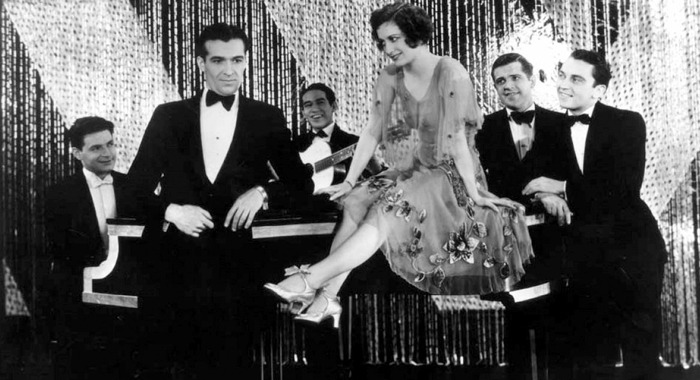 |
| Joan Crawford |
Não podemos negar que o tempo não foi
bom com o filme, e muitas das piadas hoje não têm graça. Entretanto, Marie
Dressler, Polly Moran e Bessie Love formam um trio divertido, e o Gordo e o
Magro estão engraçados como sempre ao interpretarem dois mágicos atrapalhados –
sendo que o Magro não fala uma palavra! Quem também não fala nada é Buster
Keaton, que substitui Carla Laemmle – que usava um provocante biquíni de duas
peças – como a filha dançarina de Poseidon, deus dos mares.
We can't deny that time hasn't been kind to the
film, and many of the jokes fall flat nowadays. However, Marie Dressler, Polly
Moran and Bessie Love make a funny trio, and Laurel and Hardy are they usual
selves as two clumsy magicians – even though Laurel doesn't say a word! Another
one who doesn't say a word is Buster Keaton, who replaces Carla Laemmle – who
was in a risky two-piece swimsuit – as the dancing daughter of Poseidon, the
god of the sea.
Joan Crawford é fofa cantando e
dançando “Gotta Feeling for You”. Joan é melhor dançarina que cantora, e é
óbvio que ela não canta e dança ao mesmo tempo, porque, mesmo havendo a música,
seus lábios não se mexem. Não há nada de extraordinário no número de Joan, mas
quando as dezenas de dançarinos se juntam no palco, tudo fica melhor: o
trabalho de coreografia com o grupo é maravilhoso, e os dançarinos comumente
chamam mais atenção que as músicas e os cantores.
Joan Crawford is cute singing and dancing “Gotta
Feeling for You”. Joan is a better dancer than singer, and it’s obvious that
she is not singing and dancing at the same time, because her mouth does not
move, even though the song goes on. There is nothing extraordinary in Joan's
number, but when the dozens of dancers join any number, things get much better:
the chorus is very well-coordinated and choreographed, and they often distract
us from the music and the singers.
Mas o que é aquilo no número “Lon
Chaney is Gonna Get You If You Don’t Watch Out?” E uma coreografia ao estilo de
Busby Berkeley! Este é um momento interessante, provavelmente influenciado pela
Broadway, que é onde Berkeley trabalhava na época. É também uma coincidência
curiosa, considerando que Busby Berkeley trabalhou na MGM na década de 1940.
But what is that in the number “Lon Chaney is Gonna
Get You If You Don’t Watch Out”? It is a Busby Berkeley-style choreography!
It's an interesting bit, much probably coming from Broadway, where Berkeley
worked at the time, and a curious coincidence, considering that Berkeley worked
at MGM in the 1940s.
 |
| Regular Broadway |
 |
| Berkeley Broadway |
O popular cantor de vaudeville
Charles King diz ao galã de cinema Conrad Nagel que “hoje, você precisa fazer
amor com palavras e música”. Charles menciona uma música que ele interpretara
em “Melodia da Broadway” (1929) chamada “You Were Meant For Me”. Para a
surpresa de todos, e em especial de Charles, Nagel senta em um piano e
interpreta lindamente a música para Anita Page. Mas era tudo um truque, nunca
revelado durante o filme: na verdade, era o próprio Charles King que dublou
Conrad Nagel na cena! Com ou sem dublagem, Nagel sobreviveu à chegada do cinema
falado e teve uma longa carreira como coadjuvante no cinema e na televisão até
1967.
Popular vaudeville singer Charles King says movie
star Conrad Nagel that “today, you've got to make love with words and music”.
Charles mentions a song he interpreted in “Broadway Melody” (1929) called “You
Were Meant For Me”. For everybody’s surprise, and especially Charles’, Nagel
sits in a piano and sings the song beautifully to Anita Page. But it all was a
trick, not revealed in the movie: actually, it was King himself who dubbed Conrad
Nagel’s singing voice! With or without dubbing, Nagel survived the talkie
revolution, and had a long career as a supporting player on film and TV until
1967.
E se falamos sobre a transição do
cinema mudo para o falado, precisamos mencionar a surpreendente e inteligente
sequência de Romeu e Julieta. Filmada em two-strip
Technicolor, suas estrelas são John Gilbert e Norma Shearer. A voz de
Gilbert é boa, e esta pequena sequência já é suficiente para nos mostrar que a
história sobre “a voz de taquara rachada” que é usada para justificar o
fracasso de Gilbert no cinema falado é uma falácia. A sequência, já
interessante, se torna ainda mais legal quando o diretor da cena, interpretado
por Lionel Barrymore, diz aos atores para modernizar as falas, e eles refazem a
cena da sacada de Romeu e Julieta usando gírias dos anos 1920.
If we're talking about the silent-to-talkie
transition, we must mention the impressive and clever Romeo and Juliet
sequence. Shot in two-strip Technicolor, it stars John Gilbert and Norma
Shearer. Gilbert's voice is fine, and this simple sequence is enough to show us
that the “funny voice story” that is used to justify his short career in
talkies is a myth. The already cool sequence becomes even nicer when the
scene's director, played by Lionel Barrymore, tells them to modernize the
dialogue, and they redo the balcony scene in Romeo and Juliet with 1920's
slang.
A MGM foi o primeiro estúdio a
apresentar uma revista como esta, cheia de estrelas, e a fórmula foi
rapidamente copiada por outros estúdios. A Warner Brothers foi o estúdio
seguinte, fazendo “A Parada das Maravilhas / The Show of Shows”, filmado quase
totalmente em two-strip Technicolor.
Depois veio a Fox, com “Dias Felizes”, e então a Paramount com “Paramount em
Grande Gala / Paramount on Parade” (1930). A Fox também fez as revistas menores
“Fox Movietone Follies” em 1929 (antes da MGM, este filme foi perdido) e em
1930 (o filme sobrevive).
MGM was the first studio to present an all-star
revue, and the formula was quickly copied by other studios. Warner Brothers
followed with “Show of Shows”, almost fully shot in two-strip Technicolor. The
next studio to make a revue was Fox, with “Happy Days”, followed by Paramount
with “Paramount on Parade”, from 1930. Fox did also the smaller revues “Fox
Movietone Follies” in 1929 (before “Hollywood Revue of 1919”, this film is now
lost) and 1930 (still extant).
Se você não gosta de musicais, não
chegue perto de “Hollywood Revue”. Quer dizer, se você não suporta um musical
com uma história, você é capaz de se imaginar vendo um musical SEM uma
história? Caso contrário, se você ama musicais, história do cinema ou se você é
um historiador amador e curioso, “The Hollywood Revue of 1929” é um documento
interessante – na falta de termos melhores. Afinal, se não é por causa das
coisas estranhas que você encontra no processo, por que você estuda história?
If you don’t like musicals, don’t go near “The
Hollywood Revue of 1929”. I mean, if you can’t stand a musical with a plot, can
you imagine yourself sitting through a musical WITHOUT a plot? On the contrary,
if you love musicals, film history or if you are a curious history buff, “The
Hollywood Revue of 1929” is an interesting document – for lack of better terms.
Because, if not for the weird things you find along the way, why do you study
history?
This is my contribution to The MGM Musical Magic Blogathon, hosted by Annette at Hometowns to Hollywood.
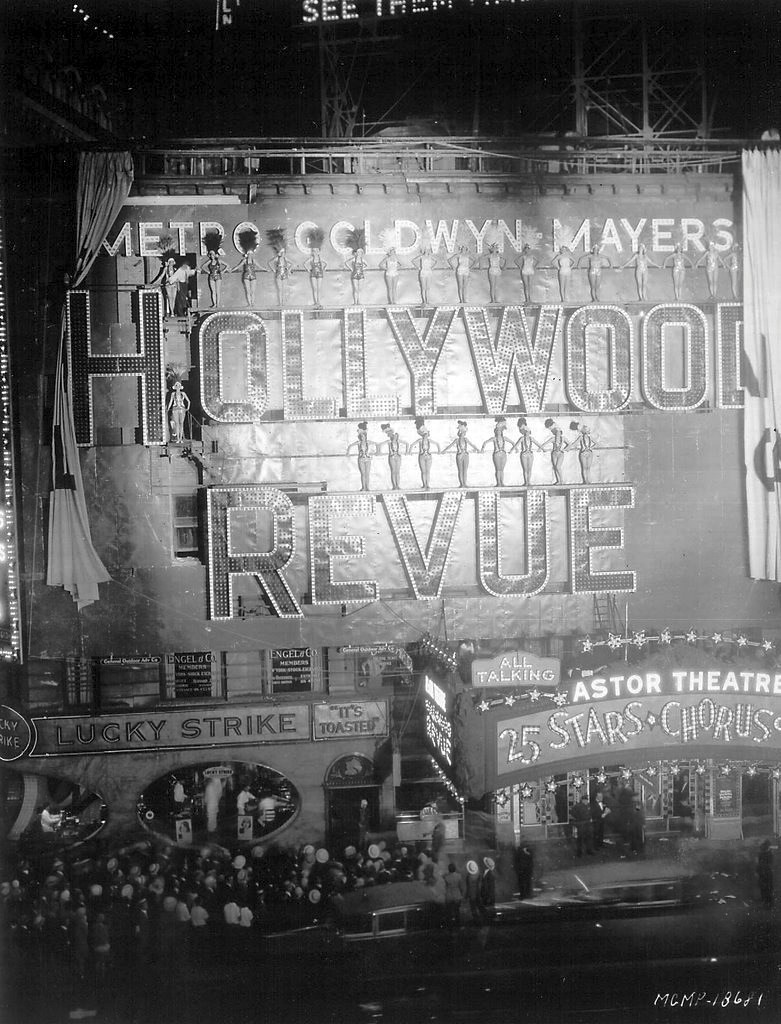


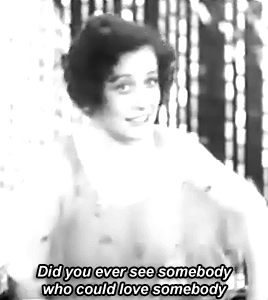
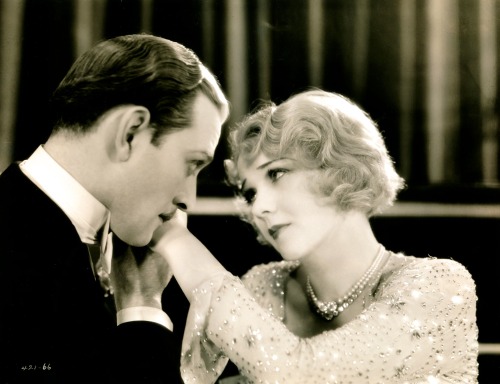

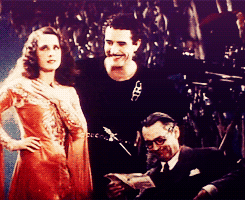

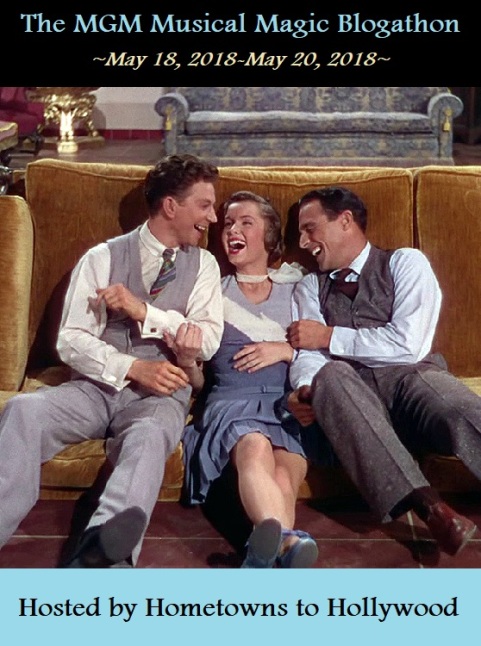
Your warning is well heeded. The Hollywood Revue is entertaining in spots, but it is only really interesting to those who love the history of show business and the movies. For those of us with that interest, we are very lucky to have this film. It is a grand thing that MGM started in the musical genre as soon as possible.
ReplyDeleteI haven't ever seen The Hollywood Revue of 1929, but I would like to. I am not sure what the oldest MGM musical I have seen, but I know it isn't that old!
ReplyDeleteThanks so much for participating in the MGM Musical Magic Blogathon! The Hollywood Revue of 1929 is one of my absolute favorites. There's a little something there for everyone to enjoy. Thanks again!
ReplyDelete